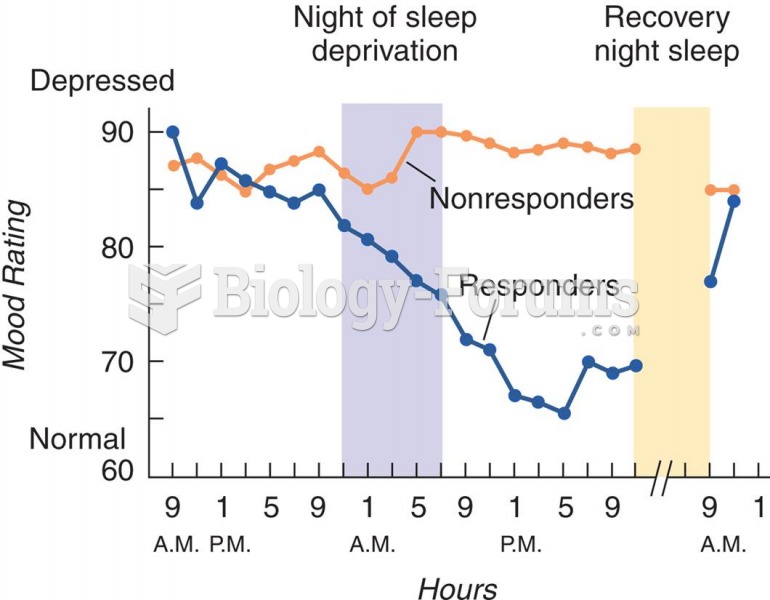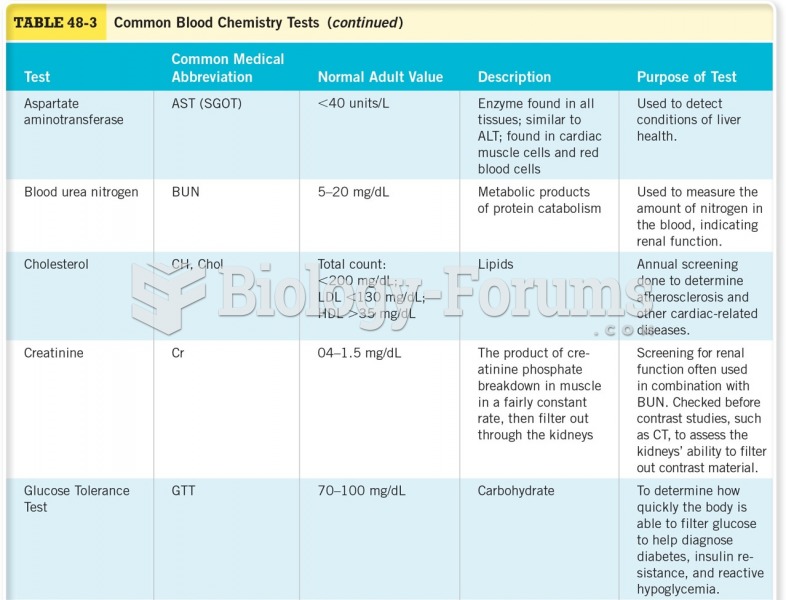Answer to Question 1
Early dumping syndrome:
Occurs approximately 10-20 minutes after eating.
Symptoms include flushing, increased heart rate, explosive diarrhea, and also hypotension (leading to dizziness, weakness, and possible fainting).
These symptoms are caused when a high carbohydrate intakewhich is hyperosmolarenters the small intestine over a short period of time.
- The hyperosmolar load pulls water into the small intestine.
- This decreases plasma volume, resulting in hypotension.
- The rush of fluid into the small intestine results in diarrhea.
Late dumping syndrome:
Occurs anywhere from 1 to 3 hours after a meal.
Symptoms include feeling confused, feeling light-headed, perspiration, shakiness, and weakness.
Etiology stems from the rapid movement of carbohydrate into the small intestine.
Rapid absorption stimulates a large release of insulin and hypoglycemia results.
Prevention of the dumping syndromes is based on a slow progression of an oral diet with avoidance of simple carbohydrates.
It is important to ensure adequate kcal and protein for postoperative healing.
First meals post-operatively should include a protein source with only 1-2 foods at a time.
Liquids should be consumed 30-45 minutes after eating solid foods.
Lying down after eating may also assist.
Overall, food choices should exclude simple sugars.
Chewing foods well and eating slowly may help
Avoiding extreme temperatures of foods
Intake should be divided among 6-8 small meals per day and overall should emphasize protein foods.
A slightly higher fat intake than the usual adult recommendation may be needed to meet energy requirements.
Foods high in soluble fiber may also assist in slowing gastric emptying.
Liquid multivitamins and B12 supplementation should be initiated.
Answer to Question 2
These tests are types of spirometric measurements, which include:
- Forced expiratory volume (FEV1)
- Forced vital capacity (FVC)
- Ratio of FEV1/FVC: A ratio of less than 70 FEV1/FVC is generally indicative of obstructive disease
These tests are used for diagnostic purposes, to assist in the prescription of therapy, and to evaluate responsiveness to treatment.
In general, when treatment is effective, the FEV1/FVC should improve.
FEV1
- Forced expiratory volume is the volume of air forcefully expired during the first second after a full breath.
- It usually accounts for >75 of the FVC.
- Expiratory flow rate is prolonged when there is an increase in secretions or loss of lung elastic recoil.
FVC
- Forced vital capacity is the maximum volume of air that can be forcibly expelled after inhaling as deeply as possible.
- Patients with obstructive lung disease will have a normal or slight decrease in FVC due to their inability to exhale efficiently.
Ratio of FEV1/FVC: This is the percentage of vital capacity expired in the first second of maximal expiration.
In COPD, if the FEV1/FVC is less than 0.70, then COPD is indicated. Thereafter, the GOLD classification method can be used.
- GOLD 1 (Mild): FEV1 80 predicted
- GOLD 2 (Moderate): 50 FEV1 < 80 predicted
- GOLD 3 (Severe): 30 FEV1 < 50 predicted
- GOLD 4 (Very Severe): FEV1 < 30 predicted







